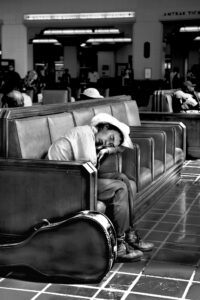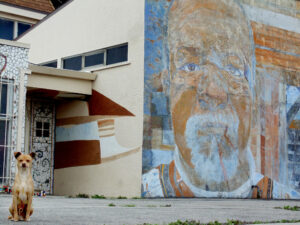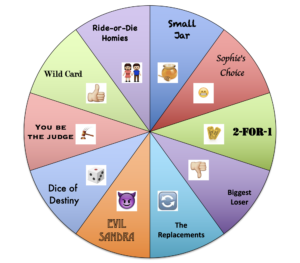“Is the Assumption of the Autonomous Individual Holding Us Back in Vocational Rehabilitation?”
By Joanna K. Fadyl, PhD, Lynette Reid, PhD, Christine Cummins, MHSc, and Barbara E. Gibson, PhD
Abstract
Despite a move toward sophisticated conceptual work in the field of vocational rehabilitation, an assumption that the subjects of intervention are autonomous ‘individuals’ continues to be taken for granted. This has many effects, including how services are funded and the way that practitioners think about what it is they do; these effects flow on into what is possible for people who experience disability. Although the field of vocational rehabilitation is not the origin of the assumption of the autonomous individual, it may be a useful place for challenging it. This article provides a brief analysis of the assumption and its effects, with the purpose of exploring what it makes visible, and where a focus for action could be.
Background
I (JF) write this critique from my own perspective, while acknowledging that I do not operate as an “individual.” Authorship is attributed to a group of people who have been working together, stimulating this thinking to the point that I am raising it as an issue with which to be grappled. The discussion of an Indigenous worldview is largely in the words of LR. We realize that the issues we are discussing here apply beyond the field of vocational rehabilitation in a number of important ways and have been discussed in various ways by others. However, I want to ask the question in the context of vocational rehabilitation because I think it is a good example of where these assumptions prevail despite the clear everyday difficulties that they create.
Vocational rehabilitation is a field that is focused on enabling people to engage with (often paid) work. It is considered an inter-disciplinary field, although the health professionals involved and its configurations tend to be somewhat determined by the jurisdiction in which it operates. Commonly involved are occupational therapists, rehabilitation counsellors, psychologists, physiotherapists, and, sometimes, occupational physicians. Professionals employed in vocational rehabilitation roles often have specialist training in vocational rehabilitation, addressing aspects like work-ability and work-site assessment, as well as engaging with multiple stakeholders (routinely including employers and rehabilitation funders) on complex issues such as safety, cost management and equity. The biopsychosocial approach1 that (in theory at least) structures vocational rehabilitation2 posits that we need to pay attention to more than just physical and psychological functioning in assessing and addressing work-disability. When applied to vocational rehabilitation—as it is in the application of the International Classification for Functioning, Disability and Health framework (ICF)3— this approach means that ‘individual factors’ and ‘socio-environmental context’ play a part in a person’s ability to engage with work and other vocational activities, and that it is inappropriate, and perhaps even perilous, to ignore this fact.
The genealogy of the biopsychosocial approach is a move away from the medical model, and an attempt to solve the problems that focusing on only the diagnosable elements of functioning have created. A major issue stimulating this move in the context of vocational rehabilitation was that although as a sub-population, people experiencing disability are less likely to be in paid work, the particulars (in diagnostic terms) of an impairment, injury, or illness are not a good predictor of work status (employed or unemployed) or ability to access or maintain work in the context of that impairment.4 Discussion on this point was initially around what might (based on the ICF framework) be termed ‘personal factors,’ or things that made one person different from the next; and ‘environmental factors’, which are to do with the actual environment within which a person is operating. However, the discussion rapidly expanded to include more of the cultural and social context. In the words of Sandqvist and Henriksson,5 “work functioning cannot be understood outside its social context.”5,p155
While the importance of social and cultural context is now the status-quo in the research literature discussing the concepts of vocational rehabilitation or work-ability, in my opinion (based on my experiences as a practitioner, educator and researcher), the research into vocational rehabilitation strategies and methods is not keeping up with the theory. Strategies and methods that are regarded to be relevant and useful by policy makers, services, and practitioners still tend to marginalize psychosocial factors such as cultural factors, interpersonal relationships, and family systems—positioning them as theoretically important but less relevant to everyday practice, to be attended to only when they are problematic.6 Practices in most Western countries are primarily focused on assessment of the person and their workplace with a view to what can be modified within these two domains.7
The postgraduate students I work with who are vocational rehabilitation practitioners often say they are interested in “what to do about psychosocial factors” in their practice. This enduring separation of biological and environmental elements of functioning from the more amorphous psychosocial functioning is fairly reflective of what the biopsychosocial model boils down to in most approaches to vocational rehabilitation practice. My analysis of this situation is that even though researchers have grappled with the issue of addressing the complexities of work functioning at the theoretical level, the actual practices suggest that there is something fundamental that remains unaddressed—that we are missing something that actually shifts what vocational rehabilitation can be. If it is possible to identify this ‘something missing’ in the conceptual work, we can generate insights that shed light on why we (as a society) are stuck in practice. The following points are a starting point in that analysis—and a call to explore what these issues make visible and where the focus for inquiry should be.
Analyzing the Assumption and Its Effects
1. A continual return to the ‘individual’
Over the past two years, we as a small group of researchers have been working on exploring an interface between critical disability studies (CDS)8 and Indigenous scholarship—in particular, Kaupapa Māori scholarship, which is grounded in Māori Indigenous knowledges.9 10 Kaupapa Māori is situated in Te Ao Māori (the Māori world), which (in the words of LR) is an entanglement of the natural and spiritual world and people. This entanglement in, of, and with each other, may be heard during a mihi, a Māori greeting which begins with the place you are from and who you are in relation to this place. Māori understand encounters within these worlds and people as instructional forces and signs speaking to us, and guiding events—many having purpose, presence, and potentiality in relation to and connection with each other. For Māori, what is ‘real’ is the interconnectedness and interdependency of the natural and spiritual worlds and the living. Reality for Māori exists within relationships. Experiences or moments exist because of an interaction between people, and the natural and spiritual worlds, and are acknowledged and honored by being present, engaged, and ‘in’ this space. Kaupapa Māori scholarship takes various forms, although often with the goal of “de-colonizing” research, knowledge and lived experiences.10 CDS also takes various forms, with the focus for our work together being on that situated in post-structural theories, particularly drawing on Deleuze and Guattari.11 The aspects of CDS we draw on consider: (a) how socio-cultural processes bring disability into reality; and (b) what (and how) lived experiences and concepts related to disability can teach us about possibilities for human becomings. Among many other things, and although they approach it differently, both Kaupapa Māori and CDS theoretical positions consider that the notion there can be an ‘autonomous individual’ in human societies is a fallacy, emphasising the interconnectedness and interdependence of people-and-the-world.
The most salient issue that this work made visible when applied to an analysis of vocational rehabilitation is that within this field, the ‘autonomous individual’ as the unit of analysis, assessment and intervention, is almost completely taken for granted. Although conceptually the biopsychosocial model1 posits that everything is connected and that the individual is just a part of a whole, all discussion remains with the individual in terms of what we are dealing with for the purposes of vocational rehabilitation. Perhaps this is not surprising, as vocational rehabilitation is a derivative of rehabilitation more broadly—a sub-discipline of Western medicine, which deals with individuals. However, the concepts (see next paragraph) of ‘assemblage’ within critical disability studies12 13 and ‘whānau’ in Kaupapa Māori scholarship14 show how inappropriate it is to assume that the entity receiving vocational rehabilitation intervention should be seen simply as an individual. The ‘individual worker self’ (an autonomous individual who carries out work, often in the context of paid employment) is in conflict with connected embodiment, and this conflict is evident in the difficulties in becoming an ‘individual worker self’ experienced by people who explicitly live in an inter-dependence with other people as part of everyday existence. I argue below that it is also implicitly evident in the issues encountered in everyday vocational rehabilitation practice. Of course, this focus on the autonomous individual is not confined to vocational rehabilitation, but comes from the wider world of work, and beyond that, neoliberal society.
2. Applying the critique to the concept of the ‘individual worker-self’
The analytical lens drawing on CDS and Kaupapa Māori scholarship offers an important critique of the ‘individual worker self’ as subject of vocational rehabilitation. As referred to above, ‘whānau’ is a Māori concept of extended family, inclusive of biological, emotional, and spiritual ties between people and to the natural world. Whānau (rather than the Western ‘individual’) is the entity that connects with services in Māori health models.14 ‘Assemblage,’ a concept drawing from the philosophy of Deleuze and Guattari11 and applied in critical disability studies,12 13 posits that while there are constructs we can identify (such as an individual worker self), continually assembling these identifiable constructs are ever-changing connections between a huge number of heterogeneous elements in various states of flux (including but not limited to the bio-psycho-social-cultural elements that make up a person, job, etc). Consequently, the constructs we may assume to be constant and fundamental perpetually shift and transform, and entities that may appear separate (eg, people and environment) constitute each other in various ways. Both whānau and assemblage presuppose that individuals, although they can be identified and acted upon, are neither autonomous of, nor separate from, the larger system (collective/constellation) that they form a part of, and should not be regarded as such. If every aspect of a system is connected to a larger whole (and this can continue to expand out into ‘the world’ as a whole), then intervention anywhere will indeed affect the whole. On the surface, this might suggest that intervening with individuals will affect the system of work-ability as intended (the basis of the biopsychosocial model). Indeed it does affect the system, but at the same time as this is happening, everything else in the system is affecting the individual. Instead of intervening with one part within a static structure, the current system of vocational rehabilitation is intervening with a dynamic larger whole. To give a simple and partial illustration: physical rehabilitation appointments and adjustments to work hours affect routines in family life, which can affect the behavior of children, which can increase family stress and in turn impact further on work performance and workplace relationships. However, managers and colleagues may only see what is happening at work, and respond accordingly. When considered in this way, it is completely unsurprising that a failure to attend to psychosocial factors such as family roles and workplace culture results in difficulties.
Furthermore, the influence of interventions focused on assumed ‘autonomous individuals’ is actually producing a particular reality. The continual emphasis on an individual as the core social entity creates those individuals. When we constantly have to direct our actions in terms of individuals (eg, with funding, reporting, discussions) then “the individual as the thing we are dealing with” is continually being re-established. Thinking from an ethical point of view, this enforcement of ‘autonomous individuals’ in everyday practice and policy is producing a reality that could paradoxically be at odds with the wellbeing of the people we are trying to serve. The effect on wellbeing may be particularly (but not only) significant for Indigenous peoples and disabled people—who are often not ‘individual worker-selves’ and may only approximate individuality as a compromise to their connected selves. And while many Indigenous and disabled people may feel this disconnect acutely, no doubt others are also vulnerable to a sense of compromised connection. Referring back to the example in the above paragraph, even a recipient of vocational rehabilitation who can experience themselves as an individual may still experience problems from a lack of attention to the whole picture—the various connected selves that the person embodies.
3. The neoliberal orientation toward personal ‘value’
When analyzing approaches to vocational rehabilitation, we can see an emphasis on how vocational rehabilitation works to manipulate (ie, restore or improve) the ‘value’ of the worker.15 Currently, that unit of ‘value’ is assumed to be the individual. However, to what extent are these current ideas actually holding us back if we want to think differently and apply them to connected selves? Do the theory and structures that underlie and govern vocational rehabilitation dictate that we are dealing with individuals? Where are the opportunities to re-think this orientation? On one level, it seems like the idea of demonstrating value could be conceived of as applying to connected selves.
For example, we could think of vocational rehabilitation as a negotiation of ‘workplace assemblages,’ which might be constantly shifting in response to the various elements—including the abilities and situations of various workers, who are viewed in relation to their connected selves. However, there are further complexities that make it more difficult to move away from the view of the individual without rethinking the underlying theory as well. With the current neoliberal orientation toward counting costs and assessments of value, ‘human capital’ is the unit, not the human being. In the case of people who experience disability, the value of their connected selves may be demonstrated in the sense of what they add to the workplace—but the workplace is but one aspect in a whole network of considerations. There are other selves that are implicated in the lives of the worker: a parent (who is also a worker themselves), a partner (who is also a son, and a student), a carer (who is also a wife and mother). It is difficult within the system of demonstrating value to be able to extend out to these wider connections—to see the system as connected to, and in negotiation with, all these lives.
A related aspect of the neoliberal context is the positioning of (paid) work as a constituent of self, and the means by which one contributes to society. This in turn is tied into the narrow ways in which ‘productive citizenship’ is interpreted in rehabilitation services.16 The lived experiences and embodiment of people who experience disability often do not contribute to what counts as productive citizenship. Indigenous embodiment and ways of knowing and becoming are similarly marginalized.17 This marginalization (at least in part) comes back to a privileging of the autonomous individual as what is valued in a workplace, in turn determining who (what person or what self) is considered a legitimate recipient of vocational rehabilitation. If we are looking for a starting point to question the privileging of the autonomous individual, vocational rehabilitation is one such place, since it is a field where disregard for connected selves is visibly problematic.
Conclusion (Provisional)
Returning to the question: Is the assumption of the autonomous individual holding us back in vocational rehabilitation? I would argue that it is, and that we need to be conducting explicit inquiry into what to do about it. To what extent are people able to work as connected selves in spite of the usual assumed ‘unit’ of worker value? Is there resistance and re-interpretation? What does it look like? What can we do to create a conversation toward something different? Concepts like ‘whānau’ and ‘assemblage,’ which we have used as the vehicle of critique in this article, may in turn open us up to perceiving work and workers as collective constellations and configurations rather than autonomous units. Concepts from other decolonial scholarship—such as being human as praxis18 and ubuntu19—may provide still other ways of seeing that facilitate access to interconnectedness and interdependence. To that end I invite further debate, conversation and scholarship.
Acknowledgements
1Centre for Person Centred Research, Auckland University of Technology, Auckland, New Zealand. Private Bag 92006, Auckland 1142. joanna [dot] fadyl [at] aut [dot] ac [dot] nz; +64 9 921 9999 x7675
2School of Education, Auckland University of Technology, New Zealand.
3 Department of Physical Therapy, University of Toronto, Toronto, Canada
4 Bloorview Research Institute, Holland Bloorview Kids Rehabilitation Hospital, Toronto, Canada
Financial support for the work described in this manuscript: Work supported by the contestable AUT Strategic Research Investment Funding held by the Centre for Person Centred Research 2017-2019.
Author contributions
Fadyl led the conceptual work described in the manuscript, including development and analysis in conversation with the other authors, and drafted the manuscript.
All named authors contributed to conceptual development, analysis and literature review (see introduction in manuscript for more detail). Named authors also made contributions and revisions to the manuscript, which all have approved.
References
1. Engel GL. The need for a new medical model: a challenge for biomedicine. Science 1977;196(4286):129-36.
2. Escorpizo R, Reneman MF, Ekholm JF, et al. A conceptual definition of vocational rehabilitation based on the ICF: Building a shared global model. Journal of Occupational Rehabilitation 2011;21:126-33. doi: 10.1007/s10926-011-9292-6
3. World Health Organisation. International classification of functioning, disability and health : ICF. Geneva: World Health Organisation 2001.
4. Aurbach R. Breaking the web of needless disability. Work 2014;48(4):591-607. doi: 10.3233/WOR-141913
5. Sandqvist JL, Henricksson CM. Work functioning: A conceptual framework. Work 2004;23:147-57.
6. Leahy MJ, Del Valle RJ, Landon TJ, et al. Promising and evidence-based practices in vocational rehabilitation: Results of a national Delphi study. Journal of Vocational Rehabilitation 2018;48(1):37-48. doi: 10.3233/JVR-170914
7. McAnaney D, Wynne R. Approaches to Occupational Rehabilitation and Return to Work in Four Jurisdictions: A Cross-National Analysis From the Perspective of the ISSA Guidelines on Return to Work and Reintegration. International Journal of Disability Management Research 2017;12 doi: 10.1017/idm.2017.2
8. Roets G, Braidotti R. Nomadology and subjectivity: Deleuze, Guattari and Critical Disability Studies. In: Goodley D, Hughes B, Davis L, eds. Disability and Social Theory. New York, NY: Palgrave Macmillan 2012:161-78.
9. Mutua K, Swadener BB. Decolonizing Research in Cross-Cultural Contexts: Critical Personal Narratives. New York, NY: State University of New York Press 2004.
10. Smith LT. Decolonizing methodologies: Research and indigenous peoples. Dunedin: University of Otago Press 1999.
11. Deleuze G, Guattari F. A thousand plateaus: capitalism and schizophrenia. Minneaplois, MN: University of Minnesota Press 1987.
12. Fritsch K. Intimate Assemblages: Disability, Intercorporeality, and the Labour of Attendant Care. Critical Disability Discourse 2010; 2. https://cdd.journals.yorku.ca/index.php/cdd/article/viewFile/23854/28098.
13. Gibson BE. Disability, connectivity and transgressing the autonomous body. Journal of Medical Humanities 2006;27(3):187-96.
14. Kara E, Gibbons V, Kidd J, et al. Developing a Kaupapa Māori Framework for Whānau Ora. ALTERNative 2011;7(2):100-10. doi: 10.1177/117718011100700203
15. Fadyl JK, McPherson K, Nicholls DA. Re/creating entrepreneurs of the self: discourses of worker and employee ‘value’ and current vocational rehabilitation practices. Sociology of Health & Illness 2015;37(4):506-21. doi: 10.1111/1467-9566.12212
16. Fadyl JK, Teachman G, Hamdani Y. Problematizing ‘productive citizenship’ within rehabilitation services: insights from three studies. Disabil Rehabil 2020;42(20):2959-66. doi: 10.1080/09638288.2019.1573935 [published Online First: 2019/03/05]
17. Cooper G. Kaupapa Maori research: Epistemic wilderness as freedom? . New Zealand Journal of Educational Studies: Te Hautaka Matai Matauranga 2012;47(2):64-73.
18. Wynter S, McKittrick K. Sylvia Wynter: On Being Human as Praxis: Duke University Press Durham, NC 2015.
19. Berghs M. Practices and discourses of ubuntu: Implications for an African model of disability? African Journal of Disability (Online) 2017;6:1-8.











 Member since 2019 | JM14274
Member since 2019 | JM14274


NO COMMENT